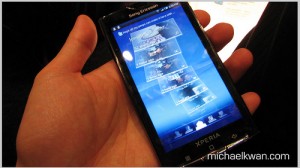 Android users may have noticed that they would experience a lag when using the touch interface, a glitch you won’t see on any of the mobile operating systems from Apple, Research in Motion or Microsoft.
Android users may have noticed that they would experience a lag when using the touch interface, a glitch you won’t see on any of the mobile operating systems from Apple, Research in Motion or Microsoft.
The real problem, according to Andrew Munn, is that Android has difficulty with the interface due to the way it handles rendering. Android, according to observations he posted on Google +, handles the rendering on the main thread with normal priority. Contrast this with the way iOS handles the user interface, which is rendered with real time priority.
He also said that other factors also come into play and produce the lag on the Android user interface. He identified the two generations of the Android OS – Honeycomb and the new Ice Cream Sandwich – and their respective photo gallery apps as being capped at 30 frames per second. The decision was a conscious one, he said, in order to prevent the lag from happening if it were bumped to the much smoother 60 frames per second. He explained that setting a maximum 30 fps will ensure that lag is limited but the solution means sacrificing smooth animations.
More interesting is that he said that hardware issues are also a problem. He said that the Tegra 2 chip is not a good compliment to Android because it has a low memory bandwidth and doesn’t have NEON instruction set support. Munn said that GPUs like the Samsung Hummingbird or the Apple A4 are better chips.
Munn’s revelations are quite telling and paint a picture of Android as an operating system that is still needs a lot of development and improvements.
Originally posted on December 8, 2011 @ 11:50 am